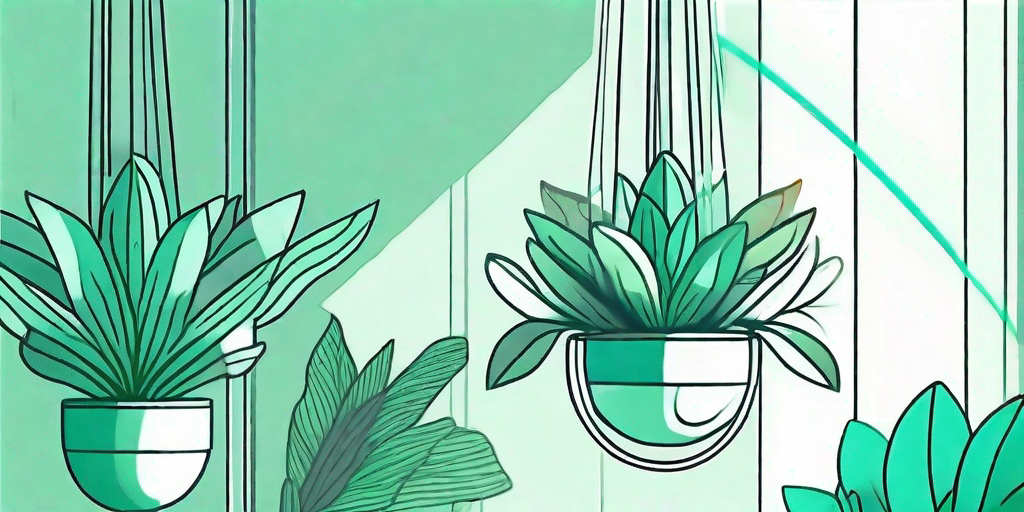
Welcome, green-thumbed friends and curious readers, to the world of the Chandelier Plant, a unique houseplant that's sure to add a touch of drama to your indoor garden. This cheeky little plant, also known as the Mother of Thousands, is as fascinating as it is beautiful. But don't let its elegance fool you; it's a hardy little devil that's surprisingly easy to care for. So, let's dive in and explore this plant's captivating world.
Understanding the Chandelier Plant
What is a Chandelier Plant?
The Chandelier Plant, scientifically known as Bryophyllum delagoense, is a succulent plant native to Madagascar. It's a member of the Crassulaceae family, which means it's a close cousin of the popular Jade Plant. The Chandelier Plant is known for its unique growth habit, producing tiny plantlets along the edges of its leaves that eventually drop off and grow into new plants. Hence, the nickname 'Mother of Thousands'.
But why the name 'Chandelier Plant', you ask? Well, when in bloom, the plant produces tall, arching stems adorned with bell-shaped, coral-red flowers that hang down like a chandelier. It's a sight to behold, and one that's sure to make your other houseplants green with envy.
Characteristics of the Chandelier Plant
The Chandelier Plant is a perennial succulent that can grow up to 1 meter tall. It has fleshy, tubular leaves that are a vibrant green color and covered in tiny plantlets. The plantlets, which are miniature replicas of the parent plant, are what make this plant truly unique.
When it comes to flowers, the Chandelier Plant doesn't disappoint. It produces clusters of tubular, coral-red flowers that hang down from tall, arching stems. The flowers bloom in the winter and early spring, adding a splash of color to your home during the colder months.
How to Grow and Care for a Chandelier Plant
Getting Started
So, you've decided to add a Chandelier Plant to your indoor garden. Good choice! But where do you start? Well, the easiest way to get your hands on a Chandelier Plant is to find a friend who already has one. Remember those tiny plantlets we mentioned earlier? They can easily be removed and planted in a pot to start a new plant. If you don't have a plant-loving friend, don't worry. Chandelier Plants are also commonly sold in garden centers and online.
Once you have your plant, it's time to find it a home. Chandelier Plants prefer a sunny spot, but they can also tolerate partial shade. They're not fussy about soil either; any well-draining potting mix will do. Just make sure the pot has good drainage to prevent waterlogging.
Caring for Your Chandelier Plant
Now that your Chandelier Plant is all settled in, it's time to talk about care. Despite its exotic looks, the Chandelier Plant is surprisingly low maintenance. It's a succulent, which means it's adapted to survive in dry conditions. This means you should let the soil dry out between waterings to prevent overwatering.
As for feeding, a slow-release fertilizer applied in the spring and summer should do the trick. Just remember, less is more when it comes to feeding succulents. Too much fertilizer can cause the leaves to become soft and mushy.
Common Problems and Solutions
Overwatering
Like many succulents, the Chandelier Plant is susceptible to overwatering. If the leaves start to turn yellow or brown, or if they become soft and mushy, you're probably watering too much. The solution? Let the soil dry out completely before watering again. And remember, when it comes to watering succulents, less is more.
Pests
While the Chandelier Plant is generally pest-resistant, it can sometimes attract mealybugs and aphids. If you notice small, cottony masses on the leaves or stems, or if the leaves start to curl and distort, you may have a pest problem. The solution? Try washing the pests off with a strong jet of water or use an insecticidal soap.
Frequently Asked Questions
- Is the Chandelier Plant toxic?
Yes, the Chandelier Plant is toxic if ingested. Keep it out of reach of children and pets. - Can I grow a Chandelier Plant outdoors?
Yes, but only if you live in a warm climate. The Chandelier Plant is not frost-tolerant. - How often should I water my Chandelier Plant?
Only when the soil is completely dry. Overwatering is a common problem with succulents.
So there you have it, a comprehensive guide to the Chandelier Plant. With its unique growth habit and stunning flowers, this plant is sure to be a conversation starter. And with the right care, it can thrive in your home for years to come. So why not give it a go? Your indoor garden will thank you!















